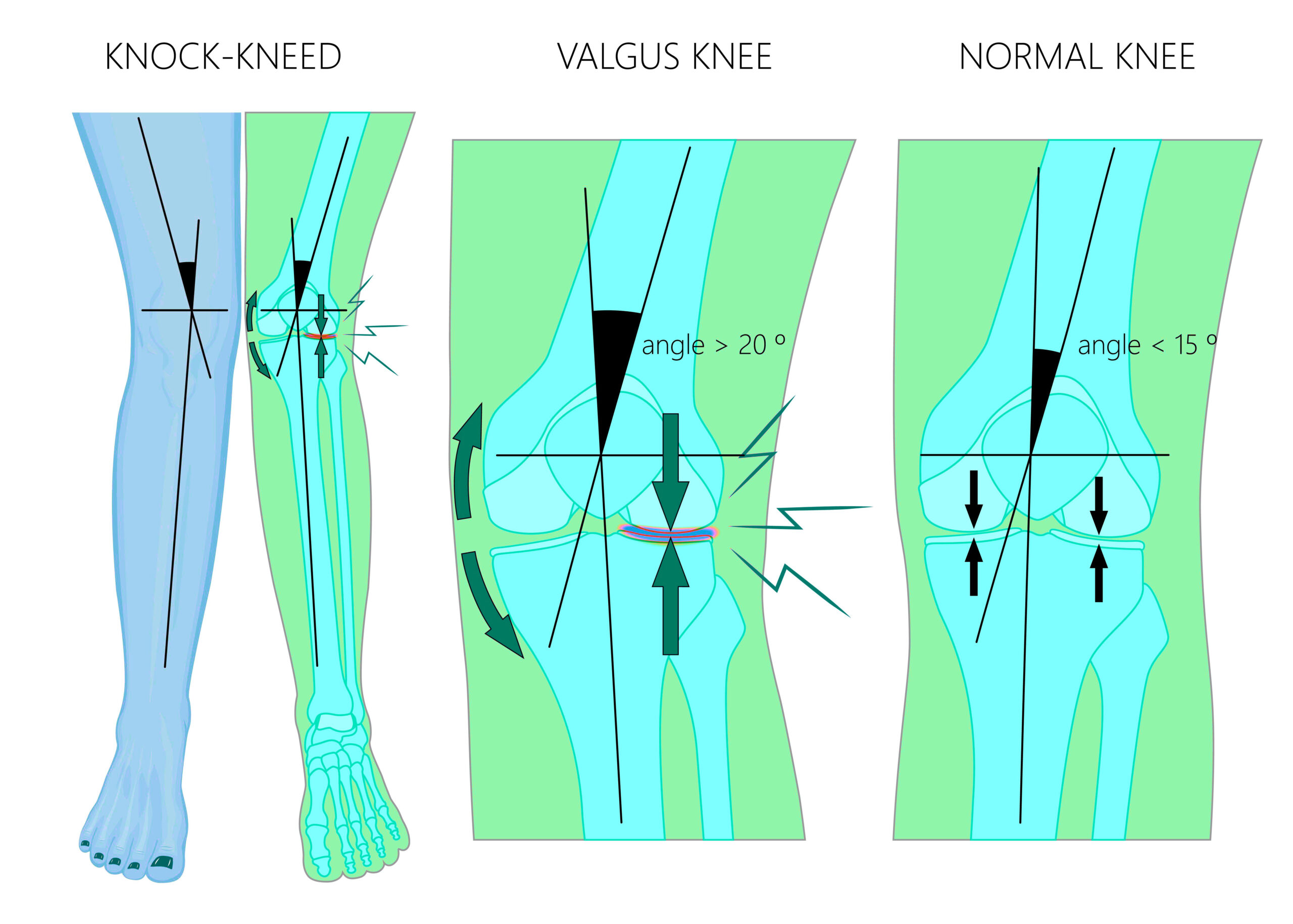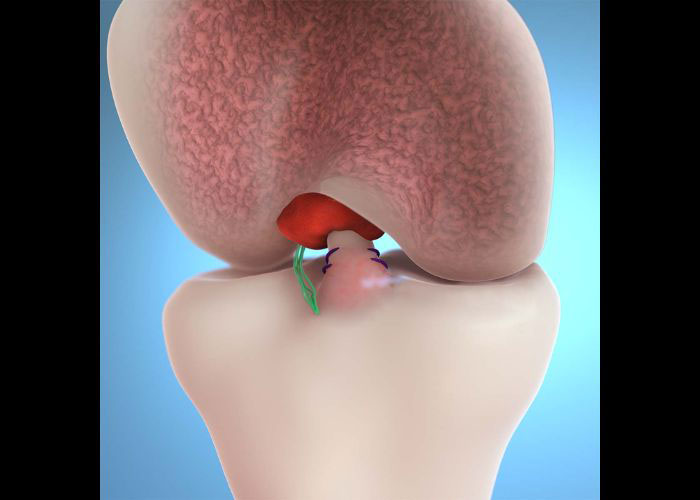What is knee malalignment?
The knee joint is a complex arrangement of the femur (thigh bone), tibia (shin bone), and patella (kneecap) with surrounding soft-tissue structures. Due to the intricacies of this joint configuration, it is heavily dependent on a correct bone alignment in order to properly distribute body weight evenly. In the event that any of the bones of the knee joint shift away from a straight line, the joint system can no longer function properly thereby increasing the risk of dislocation or premature onset of osteoarthritis. Knee malalignment can result from birth-related complications, a traumatic event, or the natural aging process.
What is valgus malalignment?
Valgus malalignment is a deformity of a joint system that occurs when the bone furthest from the joint is angled away from the midline of the body. Genu valgum, the specific term relating to the knee joint, results when the tibia is turned outward in relation to the femur. The lateral angle of the tibia causes the outer portion of the knee joint to bear more weight often resulting in premature onset of osteoarthritis. Patients with valgus malalignment often develop a “knock-kneed” appearance from the nature of the joint deformity.

What is the treatment for knee malalignment?
Non-operative therapies may be beneficial for patients with minimal knee malalignment. Such non-invasive treatment measures may include avoiding, or severely limiting, activities that cause further wear and tear on the knee joint and participating in a strength training program to minimize unnecessary pressure on the knee.
However, surgical intervention to mechanically correct knee alignment may be indicated for patients with an obvious “knock-kneed” appearance or those who continue to experience pain after non-operative therapy. The distal femoral osteotomy surgical procedure aims to realign the weight-bearing axis back to the center of the knee joint. Dr. Ronak Mukesh Patel, orthopedic knee doctor, treats patients in Sugar Land, Pearland, and the Houston, Texas area, who have experienced valgus knee malalignment and are in need of a distal femoral osteotomy.
What is a distal femoral osteotomy procedure?
There are two surgical approaches that can be taken to alter the knee alignment when performing a distal femoral osteotomy. An opening wedge osteotomy involves the creation of a bone wedge along the outside portion of the femur. A closing wedge osteotomy involves the removal of a bone wedge from the inside portion of the femur and then allowing the bone to collapse down. Aside from the technicalities of the procedures themselves, there is not much difference to either surgical technique. Therefore, Dr. Patel will review the patient’s age, medical history, activity level, and desired outcomes to determine the appropriate surgical technique.
How is an opening wedge distal femoral osteotomy performed?
The opening wedge distal femoral osteotomy procedure is more commonly performed than a closing wedge osteotomy. This procedure begins by creating an incision along the lateral (outside) portion of the knee joint. Specialized surgical instruments are introduced to cut the lateral distal femur (the portion closest to the knee joint) at a 45-degree angle towards the medial (inside) femur. This bony incision is then slowly widened to realign the weight-bearing axis to the center of the knee. Medical-grade plates and screws are then fastened to the bone to maintain this new opening and a bone graft is inserted into this wedge.
What is the recovery period like after a distal femoral osteotomy?
The recovery period following a distal femoral osteotomy is a more involved process over a longer timeframe. Most patients can anticipate a return to non-impact activities in 3 to 4 months with a full recovery to normal daily activities thereafter depending on healing and recovery. In general, patients in Sugar Land, Pearland, and the Houston, Texas area can expect the following during the recovery period:
- The repaired knee is placed into a locking knee brace for approximately 4 to 6 weeks to improve knee strength.
- There is an increased risk of fracturing the tibia if too much weight is applied to the repaired knee during the healing process. Therefore, weight-bearing will be severely limited until the osteotomy site has healed. Any weight-bearing activity should be performed with crutches.
- X-ray images will be obtained with each follow-up visit to monitor the osteotomy site during the healing process. A limb alignment x-ray is performed to confirm appropriate correction.
- The hardware implemented during a distal femoral osteotomy procedure can be surgically removed, if symptomatic, no less than 12 months after the procedure.
- The key to a successful recovery following a distal femoral osteotomy is adhering to the physical rehabilitation program designed by Dr. Patel. Patients work closely with a physical therapy team to strengthen the knee and improve range of motion.
Distal Femoral Osteotomy Surgeon

Being knock-kneed or having a valgus knee condition can cause uneven wear on the knee joint that can eventually lead to osteoporosis. A proven treatment to prevent osteoporosis caused by having a valgus knee is a distal femoral osteotomy. Distal femoral osteotomy surgeon, Doctor Ronak Mukesh Patel, provides diagnosis as well as surgical and nonsurgical treatment options for patients in Houston, Sugar Land, and Pearland, TX who have valgus or knock-knees causing pain. Contact Dr. Patel’s team today!








